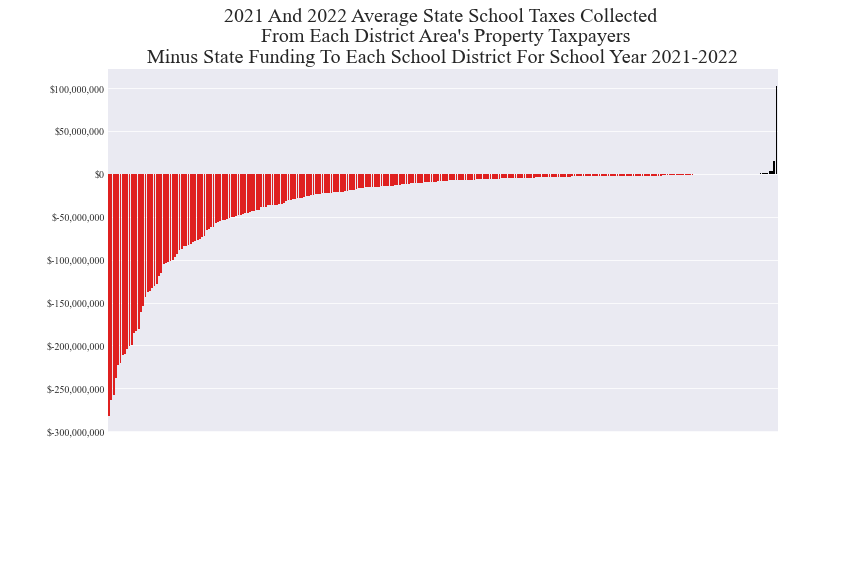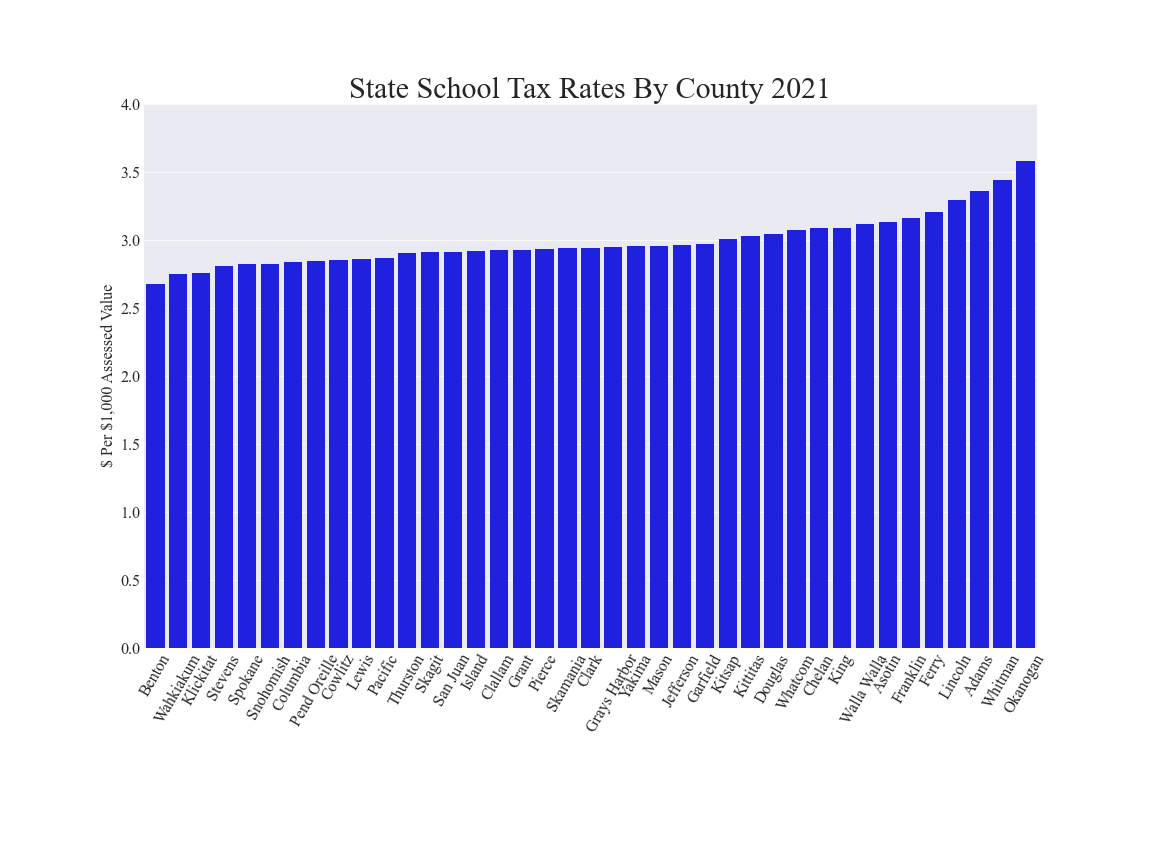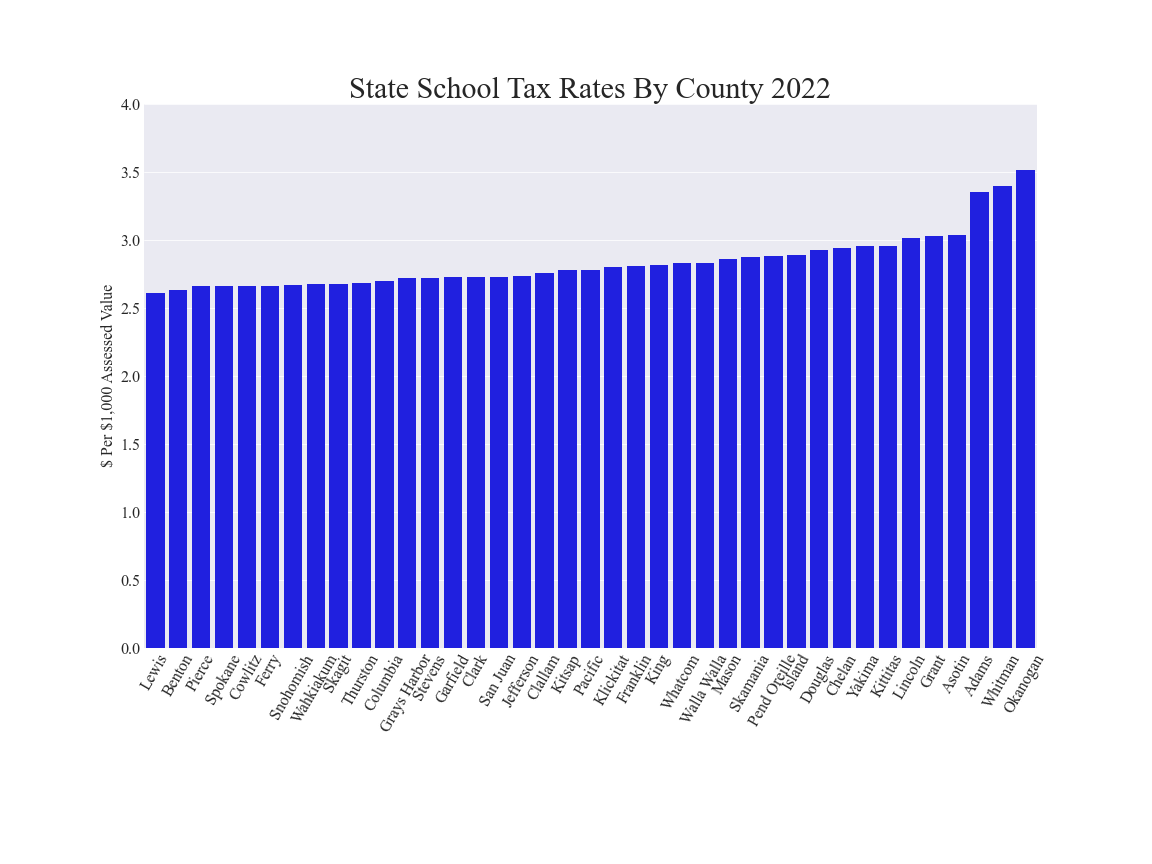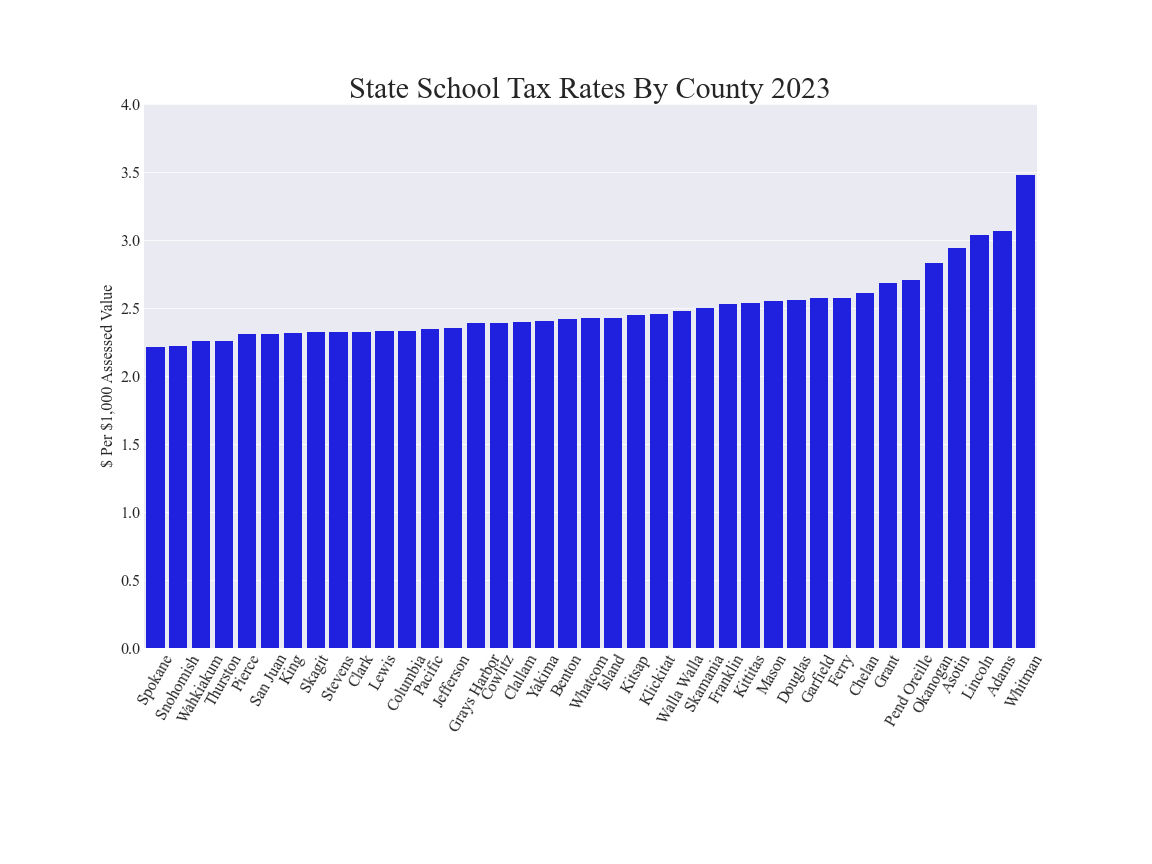State School Property Taxes Report 2021-2022
Last updated: April 5th, 2025
Contents
- Summary
- Surplus or deficit term definition
- Statistics summary
- Bar chart showing each district’s surplus or deficit
- Bar charts showing each county’s State School tax rates
- Interactive chart showing the surplus or deficit for each school district
- Table of data for all school districts (sortable)
- Methodology
Summary
From recent surveys, the author estimates that 95+% of WA voters have misconceptions of the State School Part 1 and Part 2 property tax categories on their property tax bills. They think that the taxes collected for these 2 categories are sent to the State and the State then sends a small portion (10-20%) back to their local school district while the other 80-90% of those State School taxes collected go to other school districts or other uses somewhere in the State. However, in actuality (except for 11 school districts out of the 295 school districts in WA) 100% of property taxpayers’ State School Parts 1&2 taxes are returned to their local school district. In fact the State needs to send substantially more to their local school district often on the order of 4 to 5 times as much as the State School tax amounts collected. This extra State funding is primarily from State Sales Tax taxpayers. The State School Parts 1&2 property tax categories perhaps should be renamed to “Local School District Partial Funding” to give citizens a more transparent and factual understanding of their property taxes and to the extent of spiraling public school district spending.
Currently, property taxpayers incorrectly think that approximately 25-35% of their property taxes goes to their local school district when a more accurate figure (accounting for the State School Parts 1&2 property taxes) is closer to 55-70%
As of this writing, the latest OSPI school district budget information available is for the 2021-2022 school year. This report focuses on that 2021-2022 school year but will be updated as the OSPI releases new data.
Surplus or deficit term definition
Surplus (or deficit) used in this report is defined as: The amount of State School Parts 1&2 property taxes paid by the school district area’s property taxpayers to the State minus the funding amount sent from the State to the school district.
Statistics summary
There are 295 traditional public school districts in WA.
For the 2021-2022 school year
- 11 school districts had a surplus
- 284 school districts had a deficit
- The Seattle SD had the highest surplus of $103M
- The Spokane SD had the highest deficit of $282M
The 11 school districts that had a surplus as defined in this report (their district area property taxpayers paid more to the State than what the State sent to the school district):
- Island County, South Whidbey SD
- King County, Bellevue SD
- King County, Mercer Island SD
- King County, Seattle SD
- Kittitas County, Cle Elum-Roslyn SD
- Kittitas County, Damman SD
- Mason County, Grapeview SD
- San Juan County, Lopez SD
- San Juan County, Orcas Island SD
- San Juan County, San Juan Island SD
- San Juan County, Shaw Island SD
Bar chart showing each district’s surplus or deficit

Bar charts showing each county’s State School property tax rate



All properties within school district tax areas within a county are assigned the county’s State School property tax rate for the year. The obvious question though is, why are the State School property tax rates different for each county? Why are some so high? The reason is that some counties are not necessarily up to date in their assessments for property values in general for one reason or another. The State compensates for this by auditing each county each year. When the State auditors find underestimation of assessed values in a particular county, the State then assigns a higher State School property tax rate to that county. While this is logical and fair for State School tax collection, it highlights a problem of the 70 school districts that span multiple counties. This accuracy compensation factor is not applied for school district bonds and school district levies. So residents in counties with more accurate, up to date assessed values are paying disproportionately more than their counterparts in the same school district tax area but in the neighboring county for school district bonds and levies.
Interactive chart showing the surplus or deficit for each school district
Tips on using the interactive capabilities:
- As you hover your mouse over a bubble, pertinent details are displayed.
- As you hover your mouse over any part of the chart, a special menu of icons appears just above the chart.
- There are icons to zoom in and out, or zoom into a rectangular area.
- There are icons to pan, auto scale and to reset the axes.
- The legend is active and offers the ability to filter the districts displayed by county.
- To remove all bubbles from the chart except for those for one county, double click (2 rapid mouse clicks) on the county name in the legend.
- You can also toggle on additional counties one at a time by a single click on the county names in the legend of the additional counties of interest.
- If you want all counties on, double click any county in the legend that is off.
Table of data for all school districts (sortable)
Methodology
The OSPI’s F196 Budget Report data for the 2021-2022 school year was used to gather the State funding amounts sent to each school district.
The Department of Revenue (DOR) tax reports were used to gather the State School 1&2 property tax rates and amounts for tax years 2021 and 2022.
Then the average was calculated to align with the 2021-2022 school year data from the OSPI’s reports.
Links: